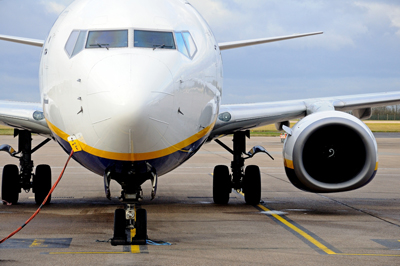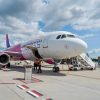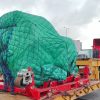 While today’s commercial fleet of approximately 20 900 aircraft (acc. to Boeing data) is expected to almost double in the next 20 years, the retirement of older generation machines is also gaining momentum. During the upcoming decade, the retirement rate is expected to reach 1000 aircraft per year, thus raising the availability of surplus parts in the aftermarket and changing the business environment for all industry players.
While today’s commercial fleet of approximately 20 900 aircraft (acc. to Boeing data) is expected to almost double in the next 20 years, the retirement of older generation machines is also gaining momentum. During the upcoming decade, the retirement rate is expected to reach 1000 aircraft per year, thus raising the availability of surplus parts in the aftermarket and changing the business environment for all industry players.
While historically the retiring aircraft used to drive approximately 20% of all deliveries, the trend is rapidly changing. Since today more than 80% of surplus parts in the aftermarket come from part-outs (up from 55% a decade ago), ICF International forecasts that over the upcoming 10 years’ time up to 50% of new aircraft will be introduced to fleets as a result of the need to replace the retiring units. Naturally, the availability of spares will increase, pushing the current prices downwards and making the already tense aftermarket even more competitive. It is noteworthy that already today operators spend approximately $3.5 billion on aviation surplus components each year and the sum is expected to grow at a CAGR of 5.5% at least until 2023.
Needless to say, this spells good news for aircraft operators, as surplus spare parts allow to significantly cut maintenance-related expenses, especially for those reluctant to consider PMA alternatives. For instance, the ICF states that using surplus parts for MRO needs may bring up to 30% maintenance-related savings. As a result, Aviation Week reports that while PMAs still account for as little as 2% of the market share, surplus spares already represent a firm 12%. Nevertheless, the situation with independent MROs and OEMs is a little more ambiguous.
“Currently several trends are shaping the surplus parts market. Alongside the growing demand for integrated component MRO solutions and the increasing retirement of younger aircraft models, lessors are acquiring an increasing share of the currently operated fleet. However, while the increasing use of surplus parts spells cost savings for operators, it might present news challenges for OEMs,” shares Zilvinas Sadauskas, the CEO of Locatory.com. “Since the trend has a direct effect on the demand for new parts in the aftermarket, manufacturers might be forced to re-think their spare parts-related strategies, especially as concerns the support of mature aircraft.”
component MRO solutions and the increasing retirement of younger aircraft models, lessors are acquiring an increasing share of the currently operated fleet. However, while the increasing use of surplus parts spells cost savings for operators, it might present news challenges for OEMs,” shares Zilvinas Sadauskas, the CEO of Locatory.com. “Since the trend has a direct effect on the demand for new parts in the aftermarket, manufacturers might be forced to re-think their spare parts-related strategies, especially as concerns the support of mature aircraft.”
According to the executive, currently over 60% of the segment is dominated by engine surplus parts, followed by 30% of surplus components. Moreover, the segment growth is affecting the nature of surplus parts business itself, as a number of relatively small players are looking into the opportunities stemming from the expansion beyond mere trading. As a result of such developments, some industry giants, such as GE, Pratt & Whitney, and AeroTurbine have already decided to join the race and started to practice aircraft dismantling to ensure the availability of inventory on offer.
“The situation is ambivalent for independent MROs as well. On the one hand, offering surplus parts can become a viable strategy in gaining a much-desired competitive edge. On the other hand, it may reduce the demand for maintenance services (and, in turn, the cost of certain maintenance works),” comments Zilvinas Sadauskas, the CEO of Locatory.com. “All in all, whether or not the new market segment will reach the forecasted estimates, it has already become a significant force in aviation MRO, and needs to be reckoned with by all industry representatives.”





